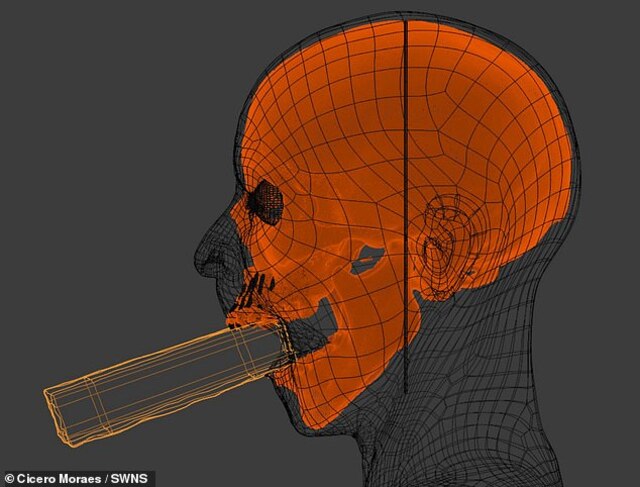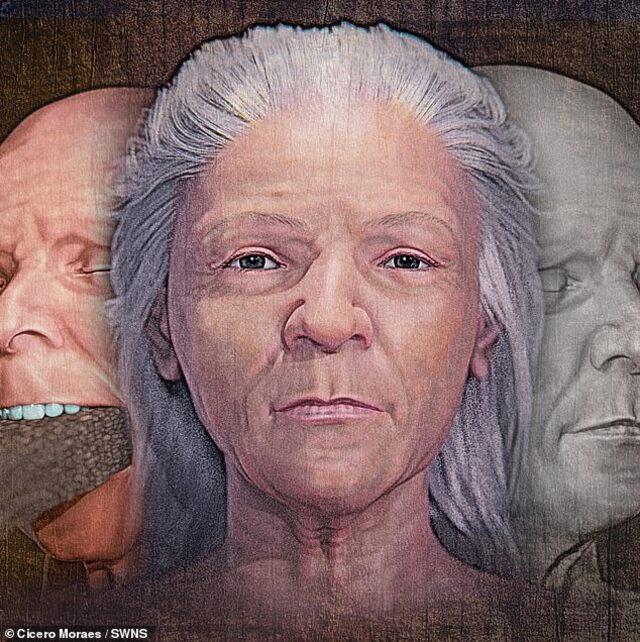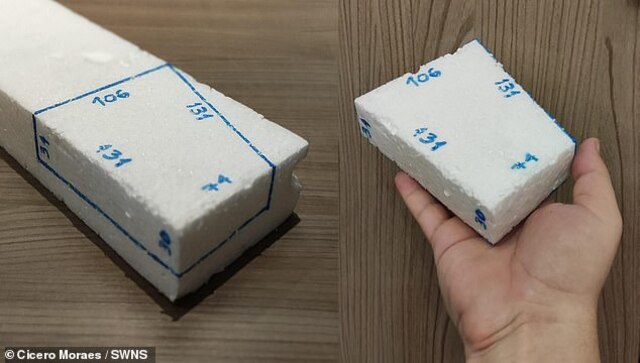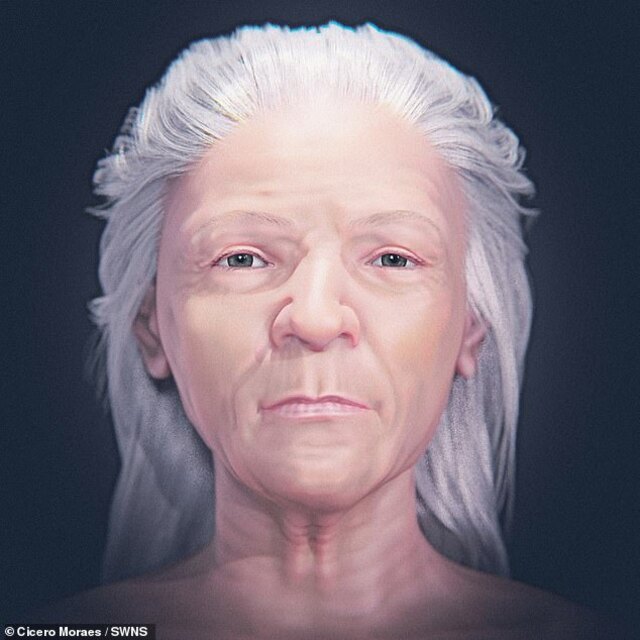In the quiet corners of history, there are stories that refuse to fade into the past, intriguing us with their eerie mysteries. One such tale emerged from the depths of a 16th-century mass grave on the Venetian island of Lazzaretto Nuovo. Here, among the plague victims, scientists uncovered a woman buried with a brick jammed in her mouth, a burial practice that suggests she was feared as a vampire. This unusual find has sparked both scientific curiosity and historical debate, offering a chilling glimpse into the superstitions that gripped Europe during the height of the plague. Who was this woman, and what led to such a macabre final resting place?
The Discovery at Lazzaretto Nuovo

The mass grave where this woman was found is located on Lazzaretto Nuovo, an island near Venice, Italy. In 2006, excavations on the island, known for its use as a quarantine station for plague victims between the 15th and 17th centuries, led to the discovery of the woman’s remains. Lazzaretto Nuovo served as a critical site for isolating those suspected of being infected with the bubonic plague, one of the most deadly outbreaks in human history. It was here that researchers unearthed a female skeleton that seemed to bear an ominous distinction—inside her mouth, a stone brick had been carefully placed.
Video
Watch the video 16th-Century ‘Vampire’ Buried with a Brick in Her Mouth to Prevent Her from Feasting on the Dead to uncover the eerie history behind this ancient burial practice.
The Role of Plague in Vampire Myths
To understand why the brick was placed in the woman’s mouth, it’s essential to delve into the beliefs of the time. The 16th century was a period rife with fear and superstition, particularly surrounding death and disease. The bubonic plague, which devastated entire regions of Europe, created a climate of dread and confusion. Bodies found swollen with gas after death were often misinterpreted as signs of life or vampirism, fueling widespread vampire myths.

During this time, people believed that those who died from the plague were likely to rise from the grave, feeding on the living and spreading the disease. This led to the practice of exhuming bodies to confirm whether they were truly dead or somehow “undead.” Corpses that appeared to be intact or had seemingly come back to life were sometimes subjected to ritualistic practices designed to prevent them from “feeding” on others. One such practice was the insertion of objects—such as stones or bricks—into the mouths of the dead, a method believed to prevent the corpse from feeding on the living.
The Burial Ritual: The Brick in the Mouth

The brick placed in the woman’s mouth was not an accidental occurrence, but rather a deliberate act, as confirmed by the forensic analysis conducted by Cicero Moraes, a Brazilian forensic expert and 3D illustrator. Moraes used advanced 3D scanning technology to reconstruct the woman’s face and examine the possibility that the brick could have been inserted without causing significant damage to her oral cavity. The results suggested that the placement of the brick was intentional, as part of a burial ritual to prevent the woman from rising again as a vampire.

The practice of placing objects in the mouths of the dead is not unique to this particular grave. Throughout history, various cultures have used similar methods to deal with the fear of the undead, particularly during times of plague or other devastating illnesses. The insertion of a stone or other objects was seen as a way to ensure that the deceased would not return to harm the living.
Scientific Face Reconstruction

Using the 3D scans of the woman’s skull, Moraes and his team were able to create a digital model of her face. This process, known as facial reconstruction, allowed researchers to explore what the woman might have looked like during her lifetime. The reconstruction revealed a woman with a pointed chin, silver hair, and slightly crooked nose, providing a glimpse into her appearance. Additionally, the study allowed Moraes to test the hypothesis that the brick could be inserted without damaging the teeth or soft tissue, confirming that the placement was indeed possible.
The reconstruction of her face and the analysis of her skull provided valuable insights into her age and physical characteristics. The woman was estimated to be in her early 60s at the time of her death, a relatively advanced age for someone living in the 16th century. The evidence also suggested that she was of lower-class European descent, a detail that added to the intrigue surrounding her burial and the possibility that she may have been a victim of superstition rather than an actual vampire.
Understanding 16th Century Vampire Beliefs
The belief in vampires during the 16th century was heavily influenced by the lack of understanding of diseases such as the plague. As bodies decayed and showed signs of swelling, it was easy for people to believe that these corpses were not truly dead but had somehow returned to life. The fear of the undead spread rapidly across Europe, leading to the rise of vampire myths and the practice of digging up graves to search for signs of vampirism.
In some cultures, it was believed that the dead would rise from their graves to feed on the living, and rituals such as staking corpses through the heart or placing heavy objects in their mouths were performed to prevent this. These practices were not limited to Italy, and similar methods were used across Europe, particularly in areas where the plague had caused widespread devastation.
Cícero Moraes’ Research and Experimentation

Cícero Moraes’ work on the woman’s skull and the brick placed in her mouth provides significant insight into the burial practices of the time. Moraes recreated the brick using styrofoam and tested whether it would fit in his mouth, simulating the process of inserting the brick into the woman’s mouth after her death. The experiment demonstrated that it was indeed possible to place the brick in the oral cavity without causing damage to the bones or soft tissue.
This research not only sheds light on the burial practices of the time but also provides a deeper understanding of how people in 16th-century Venice viewed death and the undead. The fear of vampires and the use of ritualistic practices to prevent their return were likely driven by the devastating effects of the plague and the uncertainty surrounding the causes of death during this period.

The Woman’s Identity: Who Was She?
Although much is still unknown about the woman’s identity, forensic studies suggest that she was of lower-class European descent and lived to be about 60 years old. The placement of the brick in her mouth, combined with the historical context of the time, suggests that she was likely a victim of superstition rather than an actual vampire. Her remains, buried in the mass grave on Lazzaretto Nuovo, are part of a larger group of individuals who died during the plague outbreak of the late 1500s.
The woman’s burial with a brick in her mouth represents a fascinating glimpse into the cultural and religious beliefs of the time. The fear of the undead, combined with the devastating effects of the plague, led to the development of rituals and practices aimed at protecting the living from the perceived threat of the dead.

Other ‘Vampire’ Burials Across Europe
The discovery of the Venetian woman’s remains is not the only instance of unusual burial practices related to vampire myths. Similar finds have been made in other parts of Europe, including Poland and Ireland, where bodies were buried with objects such as stones, stakes, and even rocks in their mouths. These practices were likely a response to the same fears and superstitions that plagued 16th-century Italy, further cementing the idea that the belief in vampires was widespread during this period.
Video
Watch the video The Mystery of the Vampire Skeletons Buried in Ireland on Timeline to explore the chilling discovery of ancient vampire burials.
Conclusion: A Glimpse into Superstition and Science
The story of the 16th-century ‘vampire’ woman from Venice is a fascinating intersection of history, archaeology, and modern science. Through the use of advanced technology and forensic techniques, researchers have been able to reconstruct the woman’s face and determine that the brick placed in her mouth was a deliberate action, likely intended to prevent her from returning as a vampire.
This discovery provides valuable insight into the superstitions and burial practices of the time, highlighting the fear and uncertainty that gripped Europe during the plague years. While many questions remain unanswered, the woman’s story serves as a reminder of the power of belief and the enduring mystery of the past.



